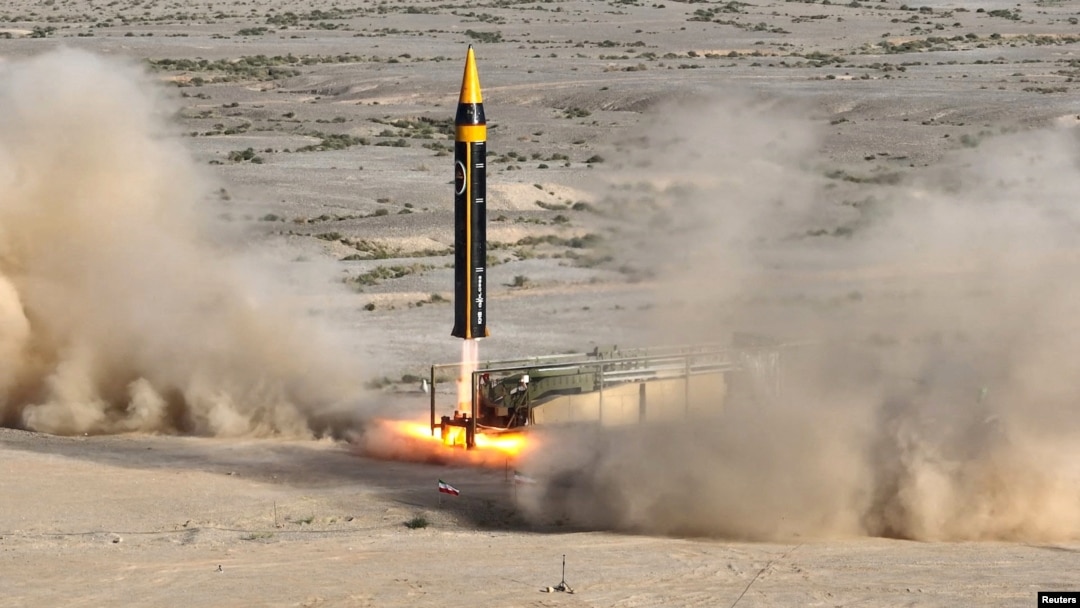Iran and Israel have traded attacks and threats in recent weeks, increasing fears of a full-scale war between the archfoes.
Israel launched an attack on Iran on April 19, almost a week after an unprecedented drone and missile assault by Tehran. Iran’s attack was in retaliation for a suspected Israeli air strike that killed seven Iranian commanders in Syria on April 1.

In the event of a direct conflict, Israel would have the military superiority, both offensively and defensively, experts say. But they say the threat posed by Iran’s arsenal of drones and missiles should not be dismissed.
Under decades of sanctions, Iran has invested heavily in developing domestic weapons programs, resulting in cheap and effective drones as well as more advanced ballistic missiles.
John Krzyzaniak, a research associate at the Wisconsin Project on Nuclear Arms Control, said Iran’s missiles “pose a serious threat” to Israel. Tehran’s combat and suicide drones, meanwhile, can “wreak havoc on a civilian population” if fired in large numbers, he said.
Even so, Israel maintains military supremacy.
Besides Israel’s operational and intelligence advantage over Iran, it also has a nuclear deterrent, experts said. Israel is widely believed to possess nuclear weapons, with the Washington-based Nuclear Threat Initiative estimating that Israel has around 90 nuclear warheads.
During the April 13 attack, Iran fired over 300 drones and cruise and ballistic missiles against Israel. Tehran claimed that it did not use some of the country’s most advanced weapons. The attack appeared to be highly choreographed and not intended to cause significant damage or casualties.
Israel said almost all of the drones and missiles were intercepted with the help of the United States, Britain, and Jordan. A handful of missiles slipped through the Israeli defenses and hit an air base, causing minor damage, according to the Israel Defense Forces.
Fabian Hinz, research fellow at the International Institute for Strategic Studies (IISS), said Iran simultaneously launching more than 100 ballistic missiles was “quite something” due to the sheer logistics and manpower involved.
“I’m actually not sure if it has ever been done in war before and that makes me wonder how much bigger they could go,” Hinz told RFE/RL’s Radio Farda.
Israel’s defense systems “performed well” against the Iranian missiles, said Jeremy Binnie, a Middle East defense specialist at the defense intelligence company Janes.
But Binnie said the reliability of the Iranian weapons appeared to have been a “major factor.” U.S. intelligence estimated that around half of the Iranian missiles failed on launch or in flight.
Israel’s attack on April 19 appeared to expose the vulnerability of Iran’s defenses. Tehran said small quadcopter drones were used, suggesting the attack was carried out from inside Iranian territory.
Israel’s advanced fighter jets give the country the superiority in the air. But Israel faces several obstacles, experts said, including a lack of aerial refueling tankers. Israel would also need permission to cross the air space of several countries to reach Iran.
If a war breaks out, Israel is likely to deploy long-range missiles against Iran, experts said. Tehran’s air defenses, meanwhile, have not been battle-tested.
Experts said given Israel’s military advantage, Iran is likely to continue to use unconventional warfare and its asymmetric capabilities. That includes the so-called “axis of resistance”: Iran’s loose-knit network of proxies and militant groups who aid it in opposing Israel.


